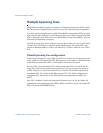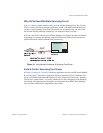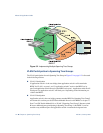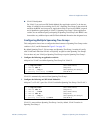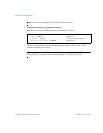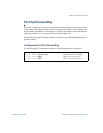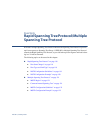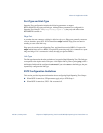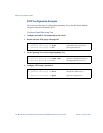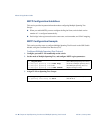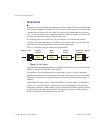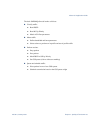
Alteon OS Application Guide
118
Chapter 6: Rapid Spanning Tree Protocol/Multiple Spanning Tree Protocol 42C4911, January 2007
Rapid Spanning Tree Protocol
Rapid Spanning Tree Protocol (RSTP) provides rapid convergence of the spanning tree and
provides for fast re-configuration critical for networks carrying delay-sensitive traffic such as
voice and video. RSTP significantly reduces the time to reconfigure the active topology of the
network when changes occur to the physical topology or its configuration parameters. RSTP
reduces the bridged-LAN topology to a single Spanning Tree.
For more information about Spanning Tree Protocol, see Chapter 5, “Spanning Tree Group.”
RSTP parameters are configured in Spanning Tree Group 1. STP Groups 2-128 do not apply to
RSTP, and must be cleared. There are new STP parameters to support RSTP, and some values
to existing parameters are different.
RSTP is compatible with devices that run 802.1d Spanning Tree Protocol. If the switch detects
802.1d BPDUs, it responds with 802.1d-compatible data units. RSTP is not compatible with
Per VLAN Spanning Tree (PVST+) protocol.
Port State Changes
The port state controls the forwarding and learning processes of Spanning Tree. In RSTP, the
port state has been consolidated to the following: discarding, learning, and forwarding. Table 3
compares the port states between 802.1d Spanning Tree and 802.1w Rapid Spanning Trees.
Table 3 RSTP vs. STP Port states
Operational status STP Port State RSTP Port State
Enabled Blocking Discarding
Enabled Listening Discarding
Enabled Learning Learning
Enabled Forwarding Forwarding
Disabled Disabled Discarding



